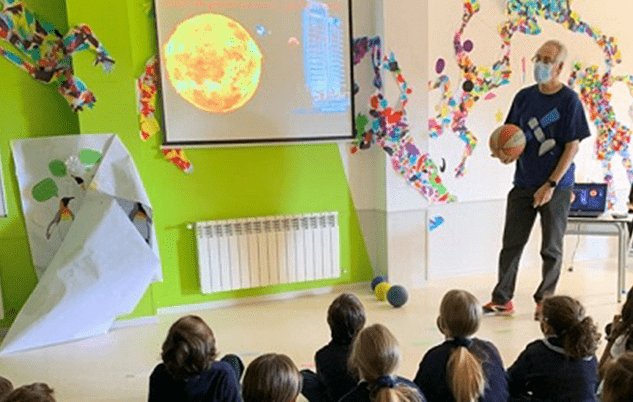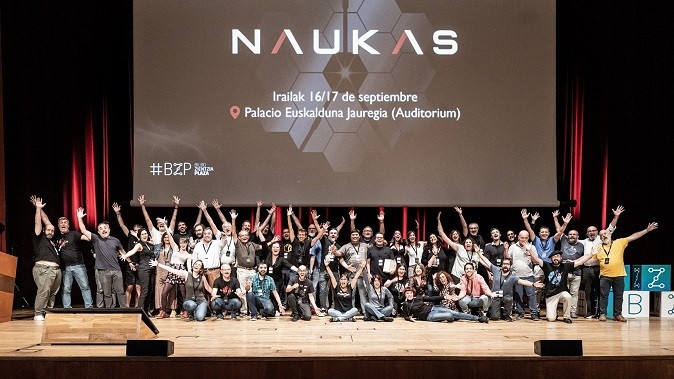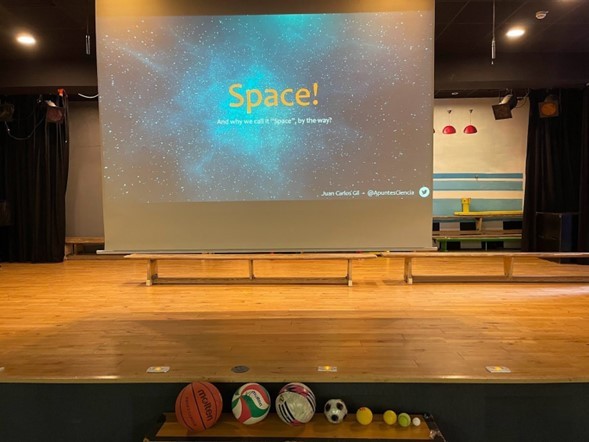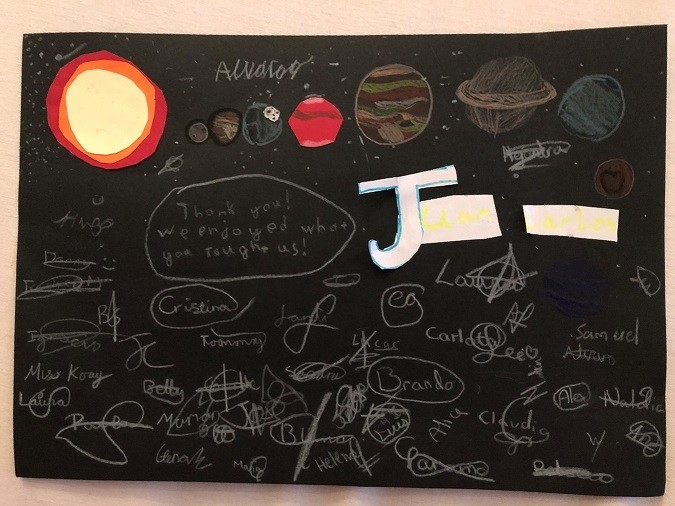The more science outreach, the better

When I was younger I wanted to be a scientist.
I didn’t even know it was called that, but my toys were the TENTE (a Lego-like construction set from Catalonia) and the Quimicefa (a small chemistry lab that is still marketed, although in the ‘80s the reagents it came with were more... fun). I would read science fiction and encyclopedias such as the Bruguera of natural sciences (yes, I read encyclopedias... didn’t you?).
When Cosmos was broadcasted in Spain, I no longer wanted to be just any scientist but Carl Sagan himself. Jacques Cousteau (The Undersea World of Jacques Cousteau) and Félix Rodriguez de la Fuente (Man and the Earth) were my idols when I was younger, covering outer space, the oceans and the rest of the biosphere...
I ended up studying chemical sciences, but I realized that cooking well was not my thing and I chose the specialty of physical chemistry, which is more theoretical, and eventually I did a Thesis combining two of my passions, science and programming, doing computer simulation (in silico experiments) of polyelectrolyte solutions such as DNA.
After my PhD I had already packed my suitcase to go and do a postdoc (as it is the traditional path of a scientific career) when something unexpected came up: a GMVita friend of the director of the department where I was doing research asked him if he knew anyone sharp, with deep knowledge of scientific-technical programming and fluent in English to work in the control center of the infrared space telescope ISO, a mission of the ESA. So I applied, they took me on and I started work at GMV, which was the winning bidder for the project.
The work I do at GMV is creative and interesting, very rewarding, and allows me to build bridges with scientific activities (from my first project with a space telescope to now, 27 years later, when I am involved in a study of quantum distribution of cryptographic keys from a satellite). But I was itching for science, I wanted more, so I thought about science outreach, an activity that has always fascinated me and that I have consumed since I was a child as I was telling you.
Unfortunately, I did not have the time it would take to keep a blog as I would had liked, and although I occasionally post on the blog of the outreach network Naukas, I opted for microblogging on Twitter. So, 10 years ago I created Apuntes de ciencia, a space where I do science dissemination for all audiences, one pill at a time, in which I mix science-related news, interpret surprising animal behaviors, release messages of biodiversity conservation, explain striking physical effects or answer any science-related question (often with the help of other scientists and science popularizers); have a look at the hashtags #FotoCiencia, #VideoCiencia and #PreguntaCiencia (spanish for science photo, science clip and science question, respectively).
The visibility I have pulled off with Apuntes de Ciencia has opened the doors of the science dissemination circles, and I have taken part in podcasts (some of them sponsored by GMV), radio programs, online outreach events...
And although I love it when someone tells me they share my tweets with their children and they comment on them, or when a teacher tells me they are going to use my material in class, or even when they screen one of my talks at recess, what most motivates me, without a doubt, is the live performance, interacting with the audience, communicating with gestures, voice and humor. Big events like Naukas Bilbao (where I have presented one and two times) are extraordinary, but to communicate staring into the eyes that populate the small halls is priceless.
In this line, a group of science enthusiasts (me included) who live in Tres Cantos set up Ciencia con Tres enCantos, an association for the popularization of science where we hold monthly talks in a bar, often given by top level guest speakers. People come on a Thursday afternoon and have a beer while they are told about science in an accessible, entertaining tone... with rigor, but without rigor mortis.
But there is no doubt that our society needs the promotion of the STEM vocations among young people, with particular attention on girls, and I take advantage of any science fair, any celebration of the International Day of Women and Girls in Science or any other reason to take my model of the Solar System made with balls from different sports (somewhat smaller than the one we set up in Ciudad Rodrigo, also sponsored by GMV) or my recreational mathematics gadgets and go to schools and institutes.
The naiveté, the carefree attitude, the unrestrained curiosity and the naturalness and the carefree attitude of children and young people are stimulating and encouraging. In my opinion, there is nothing like a thought that comes from a youngster during one of my talks.
Some time ago I gave a lecture on space in a school to 9 and 10 year olds. After introducing them to the scientific method and explaining the translation of the Earth, one girl raised her hand and said that a long time ago they believed that the Sun and the rest of the planets... revolved around the Earth! After confirming that this had been the case, I asked her what she thought about those people: “Were they wrong?” I challenged her.
I was expecting a forceful answer like “Of course they were wrong!” which would give me the opportunity to tell them that absolute truths do not exist in science, that models and theories evolve with each new piece of evidence... But it was not like that. The girl put her hand to her chin and in just a couple of seconds responded: “I think they thought they were right.”
“They thought they were right.”
A 10-year-old girl has understood the essence of science and is able to express it without hesitation in five words 😊. That night I went to bed as a happy camper. And a few days later the class sent me a thank you card. I felt so much joy!.
Science, scientific culture, is a pillar of our technological society, and popularization is a fundamental tool to bring scientific concepts and the beauty of the natural world closer to citizens.
Social networks make it possible to disseminate in an accessible way to a large audience, but the direct, small-scale, give-and-take, the addressing of that specific doubt, brings a very valuable dimension to the dissemination of scientific knowledge outreach. And bringing popular science to the classroom is one more facet that adds to and complements the academic content of the subjects.
The more science outreach, the better.
Author: Juan Carlos Gil


